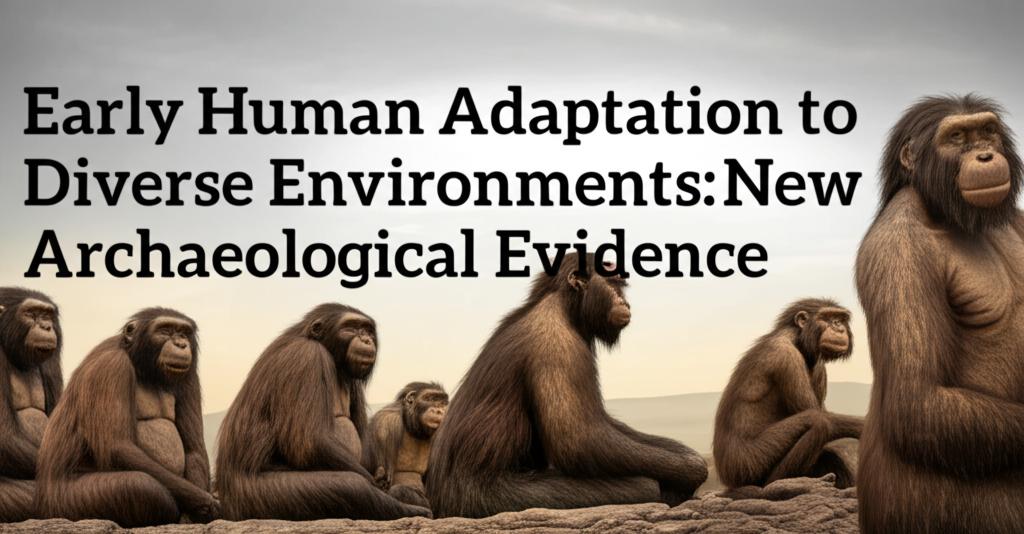Recent archaeological findings are transforming our understanding of early human adaptability. Evidence indicates that hominins, our early ancestors, were capable of surviving and even thriving in a wider array of challenging environments than previously believed, and at much earlier times.
Homo erectus: Master of Arid LandscapesNew research from Oldupai Gorge in Tanzania, a UNESCO World Heritage site, reveals that Homo erectus successfully navigated and repeatedly inhabited hyper-arid landscapes as far back as one million years ago. This is significantly earlier than the emergence of our own species, Homo sapiens, and challenges the long-held notion that only Homo sapiens possessed the ecological flexibility to thrive in such extreme conditions.
A multidisciplinary analysis, including biogeochemical studies, climate modeling, and archaeological evidence, paints a picture of Homo erectus strategically leveraging water sources like rivers and streams in a predominantly semi-desert shrubland. They returned to these locations over thousands of years, developing specialized stone tools, such as scrapers and notched tools (denticulates), likely to improve butchery efficiency. This resilience in arid zones suggests Homo erectus was a versatile generalist, capable of transcending environmental boundaries on a global scale, which likely facilitated their expansion out of Africa and into the arid regions of Eurasia. These findings position Homo erectus as a species with remarkable ecological flexibility, a trait previously attributed mainly to later hominins.
Early Hominin Presence in Europe: Pushing Back TimelinesParallel discoveries in Europe are also pushing back the timeline for early hominin adaptability. Evidence from the Grăunceanu site in Romania suggests hominin activity on the continent as early as 2 million years ago, predating the well-established site of Dmanisi, Georgia (around 1.8 million years ago). The discovery of cut-marked bones, alongside a diverse range of animal fossils including saber-toothed cats and giraffes, indicates that these early humans were capable of surviving in a variety of environments across Eurasia. Isotope analysis from the Romanian site suggests seasonal temperature fluctuations, possibly with increased rainfall, further highlighting the adaptive capabilities of these early hominins.
The Role of Climate Change and Mosaic LandscapesBroader studies analyzing fossil records, archaeological sites, and climate models over the past 3 million years reinforce the idea that early human evolution was deeply intertwined with adapting to changing climates and landscapes. As Earth's climate cooled and dried, particularly after the Mid-Pleistocene Transition (about 1 million years ago), warm tropical forests shrank and were replaced by more open grasslands and shrublands.
While earlier hominins like Homo ergaster and Homo habilis were adapted to forest environments, Homo erectus demonstrated an ability to thrive in these more diverse and open landscapes, eventually spreading across Eurasia. Later species, including Homo heidelbergensis and Homo neanderthalensis, adapted to even colder boreal forests and tundra environments.
Interestingly, Homo sapiens appear to have excelled in exploiting "mosaic landscapes" – highly diverse ecosystems offering varied food and material resources. This adaptability to a wide range of environments, including harsh deserts and tundra, is now seen as a key factor in our species' ultimate success and global dispersal. This ecological flexibility was likely crucial for surviving significant environmental shifts, such as the Toba super-eruption around 74,000 years ago, which early modern humans in the Horn of Africa successfully weathered by adapting their behaviors.
Technological and Behavioral AdaptationsThe ability to adjust to changing conditions was not just about tolerating different climates, but also involved significant behavioral and technological innovation. The development of more sophisticated stone tools, the expansion of trade networks, and potentially even early forms of symbolic communication were all part of this adaptive toolkit. Evidence from East Africa shows that as environments became more unstable, early humans transitioned from larger, all-purpose tools to smaller, more specialized Middle Stone Age technologies. This shift indicates a capacity for modifying and improving upon existing knowledge, a hallmark of human ingenuity.
Furthermore, recent discoveries in Equatorial Guinea provide evidence of systematic Homo sapiens occupation of Central African rainforests over 40,000 years ago. This finding challenges the previous assumption that rainforests were inhospitable to early human settlement and highlights the diverse adaptive strategies employed by our ancestors.
In summary, the latest archaeological evidence paints a dynamic picture of early human evolution. Far from being restricted to narrow environmental niches, various hominin species, particularly Homo erectus and later Homo sapiens, demonstrated remarkable adaptability. They successfully navigated and exploited a wide range of environments, from arid deserts to cold tundras and dense rainforests. This ecological flexibility, driven by cognitive capabilities, technological innovation, and complex behaviors, was a crucial factor in the survival, diversification, and eventual global spread of our ancestors. These discoveries continue to refine our understanding of what it means to be human and the deep historical roots of our species' resilience.

